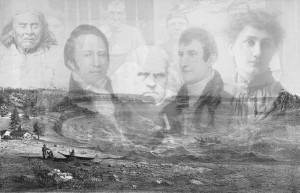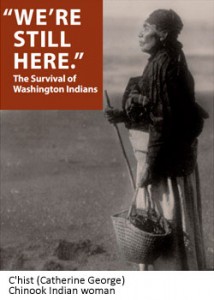
From the desk of Sean Lanksbury. PNW & Special Collections Librarian
The Pacific Northwest: Growth of a Regional Identity By Raymond Gastil and Banett Singer. (Jefferson, N.C. : McFarland & Co., Publishers, 2010. 221 p.)
The Pacific Northwest: Growth of a Regional Identity attempts to distill and define the major themes and players in the Pacific Northwestern literature as they trace the development of both the style and substance of the writing represented in our regional literary tradition. The book is not a comprehensive review, but does touch upon major ideas such as the importance of the geography and climate on author identity, the balancing tension of early 20th century radicalism against pioneer tradition and historical irony as essential thematic elements in the writing. The authors of this book blend a serious academic commitment to the subject with a conversational tone, which brightens and propels the reading experience. This analysis of the regional literature makes a valuable contribution to Pacific Northwest literary criticism.
Many acknowledge that this analysis began with the salty rant Status Rerum (1927) written by two renegades named Harold Lenoir Davis and James Stevens. At the time, Davis and Stevens were still struggling writers dismayed with what they deemed an insipid regional literary scene. They set out to skewer florid, sentimental, and sensationalistic writing that permeated the local writing, attempting to spur on better craft and a more honest representation of life in this land. Later on, both the authors went on to regional and national acclaim. H. L. Davis’ Honey in the Horn (1935) remains the only Pulitzer recipient for literature awarded to a Pacific Northwesterner, while Stevens’ Paul Bunyan (1925) help to transform an outlandish lumberjack tale into a beloved piece of American folklore.
Gastil and Singer’s analysis reaches back to place the Lewis and Clark Expedition Journals, The Hudson Bay Company, missionary journalism and correspondence, and Native American oral tradition as precursors to the literary tradition. They discuss the problems and the merits of apocryphal interpretations of the Chief Seattle “ecology speech” and Col. Charles Erskine Scott Wood’s transcription/embellishment of Chief Joseph’s famous “fight no more” speech. It also makes a chapter-long case for the appointment of V. L. Parrington, Progressive Historian and founder of the “American Studies” movement, to the University of Washington English Department in 1908 as a catalyst for a Pacific Northwest Literary Tradition.
Throughout the work the authors critique, praise, and set into context all manner of thinkers, novelists, and poets within the canon – individuals such as Zola Ross, Richard Hugo, Frederick Homer Balch, Ella Higginson, Theodore Roethke, Gary Snyder, Louise Bryant, William Stafford, Abigail Scott Duniway, Nard Jones, Ken Kesey, Joaquin Miller, and the aforementioned Stevens and Davis. Any reader looking for a better sense of the literary tradition, or just looking for a new read, could benefit from reading this engaging book.
ISBN: 978-0786445400







